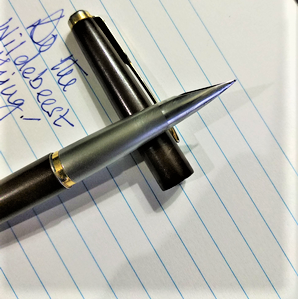
Falcons are birds of prey – and an average pen lover would be hard pressed to relate one with a pen, any pen. The pen may be mightier than the sword, but for a writer, the dove is certainly closer to the heart. Not unless, the Falcon happens to be the Parker 50. It had taken to its wings in 1978 and soared majestically till 1982 and continues to be one of the most sought-after Parker models by collectors and aficionados alike. And, there is a reason behind the naming – which is, entirely my surmise, though.
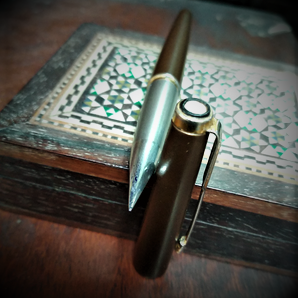
The Falcon had followed the TI – the Titanium titan with integrated nib, that was a huge step forward in the early 1970’s when it was unveiled. The design was sleek and futuristic, the balance was magnifique and the general appreciation from discerning pen-pushers warm. What had pushed it out of contention (and the catalogue) was the price and the fact that Titanium was extremely hard to work with. Well, it was another simple case of the economics not sustaining the dreams of domination, unable to fuel what was definitely meant to be the innovative disruption of the times.
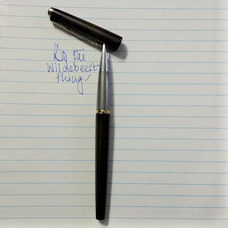
Engineers at Parker, wedded to the design as they were, were apparently not ready to give up on a product that was close to their heart and they had gone ahead, replaced the Titanium with Steel and given the world the Falcon – an all-steel Flighter. Perhaps Phoenix would have been a better name as they really believed that with the Falcon, the T1 will literally rise from the ashes, but that would have also have been tantamount to accepting the fact that the T1 was dead. And the name Falcon must have been a safer consensus choice – you know, soaring high and the ability to sweep on the opposition and the regal flight, et all.
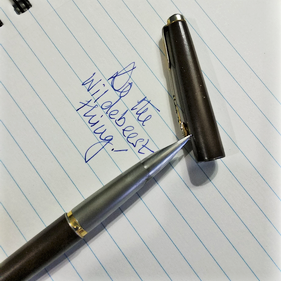
The all-steel Falcon was followed in quick succession by a Black Matt (50B / TX) version and a golden offering (the Signet), all of which had been very well received, their design, performance and pricing striking a chord in the hearts of the penophiles. The fourth and the last in the series was a Matt Brown Falcon which was introduced around 1980.
The Falcon did a Dodo in 1982. Perhaps the soaring gold prices sounded its death knell. Perhaps it was unable to withstand the onslaught of the ball point pens. Perhaps it was still too radical for the world that was, and is, enamoured with the standard nib. Who knows? I don’t.
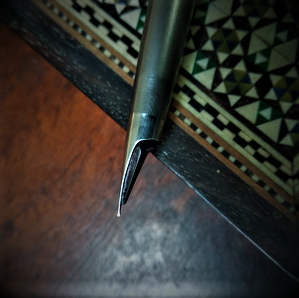
What I know is that I am a proud owner of a Matt Brown Falcon. Some collectors call it the poor man’s T1. Most pen people, enamoured as they are with the 51, date it erroneously (the Parker 51, with its hooded nib and advertised as “the world’s most wanted pen” especially during the war years, was introduced in 1941) and for other equally inexplicable reasons ignore it.

But it is a beautiful writer (the issue that plagued the T1 – a comparatively fragile nib tip had obviously been addressed) and though I have pens that write better, from shade to far better, I am not complaining. It is the design of the integrated nib that will clinch the deal for me, ten times out of a ten and the brushed steel, the balance and the sheer poise of the pen as one writes, will chip in with valuable contributions in favour of the Parker 50.
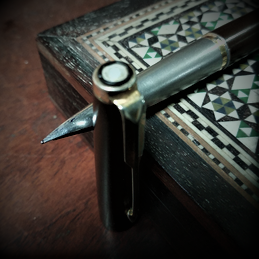
It had a free run of only about half a decade and had just four models, which makes it a relatively collector-friendly model. Besides, the fact that it sports an integrated nib adds to the exotic nature of the pen. The Falcon is not so ubiquitous or easily available either, which adds just that new dimension to the pleasure of having it in one’s collection. It is said that the Matt Black is the rarest of them all and the lowly brown that I have is the most prolific in terms of availability (it had something to do with brown being in vogue those days). But, I love it and that is what matters.
One more thing – the pen is unique in its ability to start writing even after it is left inked and capped (unused) for prolonged periods of time. The wings spread out as if following some primordial instinct and it begins to float on paper. Yes, float.
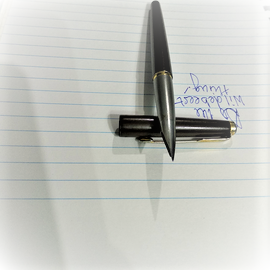
For the academically oriented, the Falcon had, apart from the T1, a more distinguished predecessor, which too is a collector’s item, to put things mildly. Yes, I am talking about the Pilot MYU 701 which had debuted in 1971. It sports a typically Japanese design of a short barrel and long cap, which make the pen short when capped and long when posted. Known as the “ultimate travel pen”, it is worth visiting the Pilot Pen Museum (Pen Station) where one is housed, just for a look. It has an extremely streamlined design with no markings except for a small Pilot name etched on the cap. The first MY pens had rolled out just a year after the T1 was introduced in 1970 but way before the Falcon with the use of steel being the tilting factor.

What should be a good price to buy this pen in 2022?